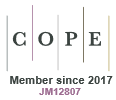Just Accepted
This article has been peer reviewed and accepted for publication. It is in production and has not been edited, so may differ from the final published form.
Estimating soil erodibility for the RUSLE with rainfall simulation in central Queensland, Australia.
Abstract
Context: Land use change in central Queensland has led to increased sediment and nutrient loads in the Great Barrier Reef (GBR) lagoon, impacting water quality. Accurate soil loss prediction is essential for managing these impacts, necessitating improved erodibility estimates for grazing lands. Aims: The objective of this study was to advance the prediction of fine sediment exports to the GBR lagoon from hillslope sources. It specifically aims to enhance hillslope erosion modelling by refining the Revised Universal Soil Loss Equation (RUSLE) soil erodibility estimates (K-factor) for grazed lands. Method: An integrative approach was employed, combining the empirical RUSLE with the process-based Water Erosion Prediction Project (WEPP). This study leverages observed soil loss data from simulated rainfall experiments to calibrate WEPP and produce an annual average soil loss to substitute into RUSLE. Prevalent soil types in the Fitzroy Basin were studied. Key Results: WEPP was calibrated with observations and shown to be able to simulate observed sediment loss with good performance indicator values (R2=0.9, PBIAS=1.9%, and NSE=0.87). The study identifies that the existing RUSLE nomograph-derived K-factors would overestimate soil erodibility by up to 63% for the soils evaluated. Traditional methods predicted higher erodibility; however, results from this study classify these soils as having low to moderate erodibility, attributed to local soil consolidation and limited erosion detachment processes typical in grazed areas. Conclusions: Findings suggest that the conventional RUSLE erodibility nomograph does not adequately reflect the erodibility of consolidated or highly aggregating grazing soils found in the GBR catchments, leading to overestimated K-factor values and, subsequently, overestimated contribution of hillslope erosion to sediment budget for the GBR catchments. Implications: This research contributes to delivering a cost-effective, measurement-based method for K-factor estimation to improve hillslope erosion prediction for grazing lands in central Queensland.
SR25008 Accepted 17 May 2025
© CSIRO 2025



